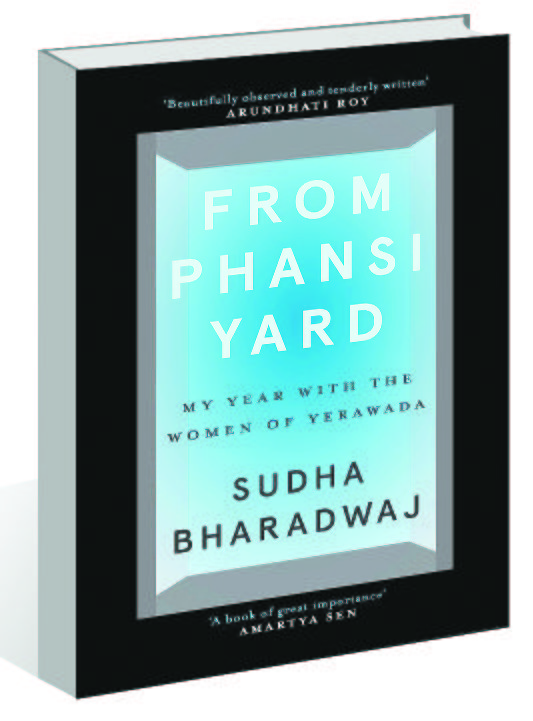From Phansi Yard: My Year with the Women of Yerawada by Sudha Bharadwaj. Juggernaut. Pages 215. Rs 799
Book Title: From Phansi Yard: My Year with the Women of Yerawada
Author: Sudha Bharadwaj
Neera Chandhoke
I first came to know of Sudha Bharadwaj in the early 1990s, when our research team in Delhi University began working on the two social movements that had made waves: the Narmada Bachao Andolan and the Chhattisgarh Mukti Morcha (CMM). The CMM, under the visionary leadership of Shankar Guha Niyogi, had mobilised contract labour clustered around the Bhilai Steel Plant. Minimum wages and decent work and living conditions are, after all, the right of workers who toil endlessly.
At this time, setting aside careerist ambitions, highly educated and idealistic Indians joined social movements that fought for the marginalised sections — the Advisasis and informal workers — and against rank exploitation. Sudha Bharadwaj was one of these idealistic young Indians. Inspired by Niyogi, she became an important part of the CMM.
In Bhilai, she worked in different capacities with contract workers who had begun to organise themselves. There were no labour laws to protect them, they were paid a mere pittance and worked for long hours in ancillary and auxiliary organisations. The movement was brutally crushed and 4,000 workers were thrown out of their jobs. On September 28, 1991, Niyogi was killed. It was a great loss to the country, particularly to those who were committed to fight for a more egalitarian India at a time the economy was freed from state control. Labour continued to be bound in fetters.
Niyogi’s death, unfortunately, sparked off numerous splits in the CMM. Bharadwaj began to live and work in Dalli Rajhara. She secured a law degree in addition to her earlier degree from the IIT. This helped her in legally defending the powerless against the big corporates who constituted, as she writes, the dark underbelly of capitalism. In 2018, human rights activists, who had asked for nothing more and nothing less than what the Constitution has promised citizens, were arrested and jailed under the notorious Unlawful Activities (Prevention) Act. The charge was incitement of violence in Bhima Koregaon. Bharadwaj was put under house arrest and then imprisoned for three years at the Yerawada jail in Pune and then at the Byculla jail in Mumbai. She was released on bail in 2021. The irony of the case against her was best summed up by a woman constable who guarded her: ‘So, Madam, what exactly is your case?’Does anyone have an answer?
At the Yerawada jail, Bharadwaj spent her time talking to other women prisoners. ‘I watched through the bars, and I wrote.’
‘We spoke,’ she writes, ‘in the van that took us to court, in the courtyard that we waited in before being summoned before the magistrate, in the room where prisoners meet relatives, in the queues before the canteen, and while jostling at the tap to fill water.’
She writes vividly of the humiliation women prisoners are subjected to, the minimal clothing allowed, the pathetic bed linen, the experience of being stripped and searched… Bharadwaj narrates stories of women prisoners locked up for serious and not-so-serious crimes, stories of tenderness and care, of small celebrations, and of the way she became ‘Vakil aunty’ to all. And through these stories, we get a nerve-wrenching picture of inhuman patriarchy, the dismal conditions in jails, inadequate legal aid, and the great injustice wreaked on women in India.
This book will make readers weep, stamp their feet in frustration at the fate of women in an unjust world, and yet smile at the resilience of those who are punished for sometimes insubstantial crimes and those who survive patriarchy. At the end, we too are driven to ask the questions: what was the crime of activists who were part of the Bhima Koregaon celebration of Dalit victory? Why have they been jailed?














